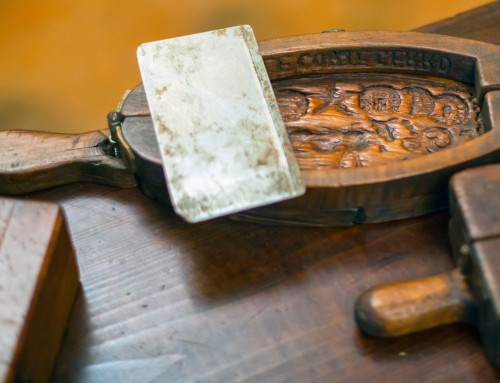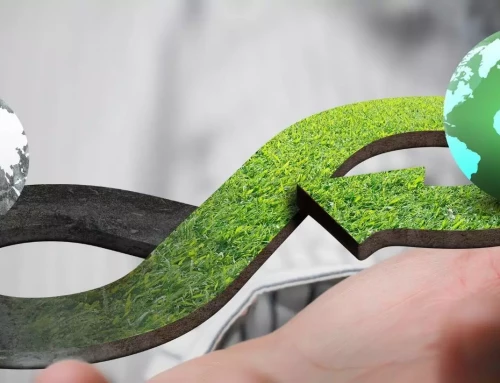Biocomposites processing guide for injection molders
Processing biocomposites is similar to that for conventional plastics, with few additional considerations
Injection molders have enjoyed the ease of processing traditional plastics due to its versatility, variety and economics to meet various needs and scenarios. Switching to biocomposites in the past has not been very successful, primarily due to higher costs, but also because the injection moulders were unable to understand and make the necessary changes to process them.
However, biocomposites have since evolved and can now seamlessly replace traditional petroleum-based plastics. This transition to make the biocomposites match the behavior of traditional plastics will be incremental and expected to get better over a period of time. Injection moulders and the materials manufacturers need to work hand-in-hand to make biocomposites a seamless and drop-in replacement to traditional plastics.
Our experience of working with more than 100 injection molders has given us great exposure to challenges and opportunities for biocomposites. Although each had technical issues at the initial stages, most of them were eventually able to run the materials successfully in their respective facilities.
Key considerations relevant to injection molding
For injection molding, it is important to understand the following key inputs about biocomposites that is being processed to ensure the moulding process is smooth.
- Ratio of natural fibers in the composition of biocomposites
- Size of the natural fibers
- Source of natural fibers – bamboo, rice husk, etc.
- Shrinkage
- HDT
Avoiding thermal degradation of biocomposites while moulding
The biocomposites have a high risk of thermal degradation due to heating while injection moulding and shear as the material flows at high pressure to fill the mould.
This is because, natural fibers used in the biocomposites are sensitive to temperature and starts to degrade as the temperature and duration of its exposure to temperature increases. Once the natural fibers degrade, it results in poor properties, aesthetics and bad odor.
The higher the natural fiber ratio and finer the fiber-size of natural fibers the more sensitive the material is to temperature. Some natural fibers such as coffee husk are much more sensitive to temperature when compared to more stable bamboo.
In principle, maintaining lower barrel temperatures, lower pressure and speed of injection, reduced residence time of the material in the barrel will ensure better results.
Pre-drying is a must! with no exception
All biocomposites need to be pre-dried in a hot-air dryer or dehumidifier. The hot-air dryer or dehumidifier should be attached to the feeding zone of the injection moulding machine to avoid any exposure of the material after it is dried and before moulding. The temperature and duration of drying depends on the effectiveness of the dryer and composition of biocomposite material. Here is what you can start with –
- Pre-drying temperature to range between 80 and 110 Deg Centigrade. The higher the temperature, the pre-drying will be so much better and this should be decided based on the HDT of the material so that the material does not clog in the dryer. Usually, lower temperatures are considered for biodegradable biocomposites as the binders used in them have lower HDT.
- Duration of pre-drying will be between 4 to 8 hours. The higher the percentage of natural fibers in the biocomopsites, the longer the biocomposites needs to be dried. Also, since the moisture content in the biocomposites made with finer-size natural fibers is high, the drying duration will be longer.
Moulding temperatures are relatively lower
Across all the zones of the injection moulding barrel and the nozzle, the moulding temperature should ideally be well within 180 degrees centigrade.
The machine capacity, mould design and part profile play an important role in deciding the temperatures, to ensure the parts are moulded as expected. Fundamentally, lower the temperature, the better will be the resulting finished product.
Start your feeding zone with temperature as low as 120 – 140 degrees centigrade, and as you move along the barrel zones, increase them incrementally to reach 160-180 degrees centigrade. For nozzle and hot runners, temperatures can be as high as 200 degrees centigrade if necessary.
Holding biocomposites in the injection moulding barrel for longer duration will degrade the natural fibers, especially at higher temperatures in the barrel. The shorter residence time is determined by the moulding cycle and the quantum of material configured to be filled in the barrel.
Ideally, material should not reside in the barrel for more than couple of minutes – once again dependent on the temperatures set in the barrel and the composition of biocomposites.
Pressure and Speed
Biocomposites have relatively lower MFI compared to traditional plastics, especially since the moulding temperatures are lower than whats used for traditional plastics. This may necessitate higher pressure and, or speed to fill the mould for the given capacity of the injection moulding machine.
However, higher speed and pressure results in higher shear temperature and also it may not result in uniform distribution of natural fibers in the finished product. The lower the pressure and speed, the better the results are in general.
Avoiding demoulding challenges
Biocomposites have relatively lower shrinkage compared to traditional plastics. The biodegradable biocomposites have almost no shrinkage at all. This means, releasing of the runner in case of cold-runner system and the ejection of the product from the mould could become a challenge.
Using hot runner or hot sprue system is always a better choice compared to cold runner. For cold runner, the design of the runner, the cycle time and the holding pressure play an important role to avoid any blockage. The longer the length of the cold runner, the more challenging it may be to work with biocomposites, especially the biodegradable grades.
Startup and shutdown considerations while moulding with biocomposites
It is important to ensure the biocomposites are not fed into the barrel until the desired temperatures are achieved. Often, we see the moulder making the mistake by introducing the material immediately after setting the desired temperatures, and much before they are actually attained. This should be completely avoided.
The barrel and the nozzle of the injection moulding machine needs to be completely clear of earlier material that may be requiring higher temperatures to operate. If the barrel is not completed purged, then the earlier material can dampen the flow of biocomposites, or interfere while moulding products. If necessary, use PP or PE to purge out earlier material and as a staging material, as they have melting temperature comparable to biocomposites.
At the end of injection moulding, the biocomposite material should be completely purged out of the barrel to avoid any degradation of the material in the barrel when not in use. Once again, use PP or PE material to ensure the biocomposites are completely urged out of the barrel and nozzle.
Small learning curve
Although biocomposites are compatible with existing molding equipment and processes, injection molders still need to experiment with different materials to figure out technical details such as mould flow, cycle and drying times. Of course, this means the initial stages won’t be perfect.
However, each of the injection molders we worked with emphasized that the learning curve was not steep and that they were ultimately able to run the materials with minimal hitches. With advancements in biocomposites formulations and tools we provide to enable the injection moulders process biocomposites, the learning curve gets better.
Injection molders can now confidently experiment and eventually work with biocomposites and many are optimistic about its benefits and demand for the materials in the coming years.






